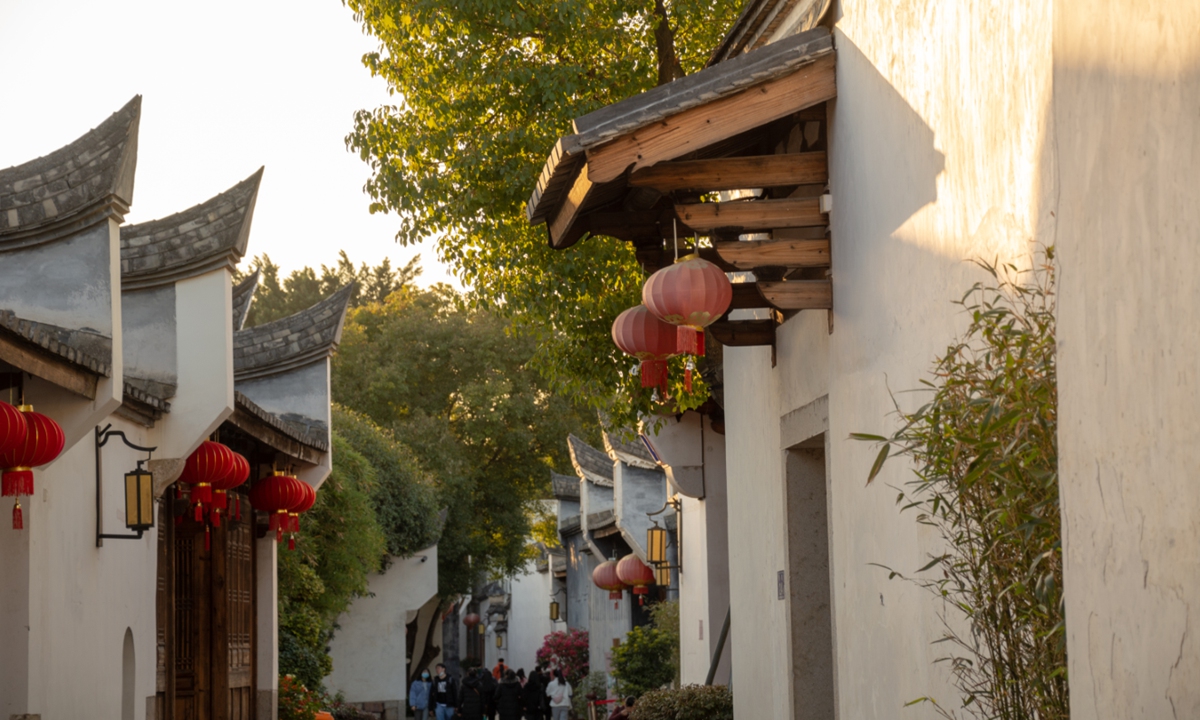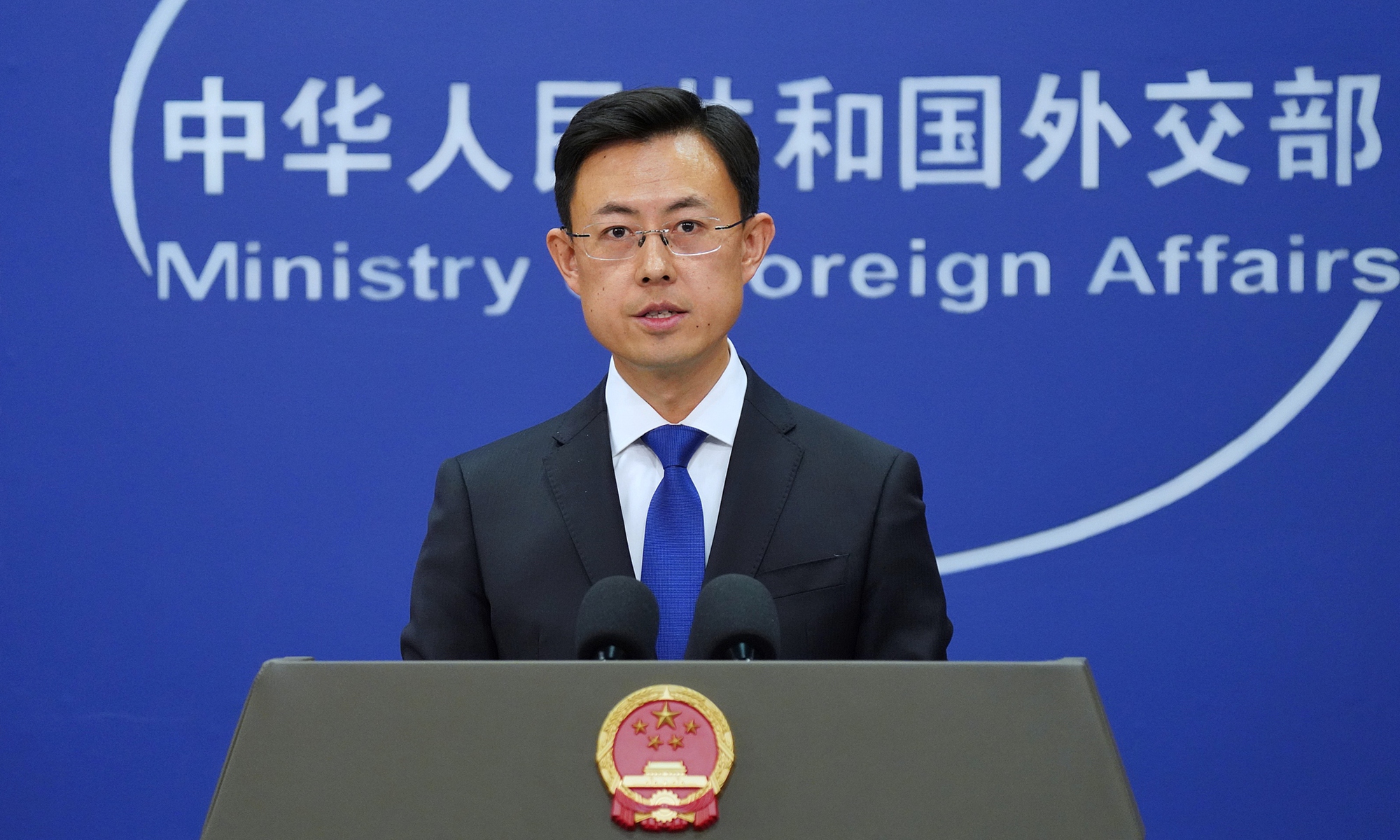
An intangible cultural heritage inheritor applies light blue and white glaze on an unfired porcelain vase in Jingdezhen, East China's Jiangxi Province. Photo: VCG
Jingdezhen, East China's Jiangxi Province, widely regarded as the "Porcelain Capital of the World," has taken a significant step toward joining the UNESCO World Heritage family. The nomination application for Jingdezhen's handmade porcelain heritage sites has been submitted to the UNESCO World Heritage Centre, the local office for the application work confirmed to the Global Times. If successful, this would make Jingdezhen's porcelain heritage China's sole World Heritage inscription for 2026, marking another milestone in the country's efforts to preserve and promote its rich cultural legacy.
While Jingdezhen is speeding up on the journey toward the status of a World Cultural Heritage site, it is far from the only region in China working toward UNESCO recognition. From Western Xia mausoleums in Northwest China's Ningxia Hui Autonomous Region, to the Central Axis of Beijing and the Sanfang Qixiang (lit: Three Lanes and Seven Alleys) in East China's Fujian Province, more heritage projects are preparing for nomination or consolidating existing World Heritage achievements.
Speaking of the enthusiasm of applying for World Heritage status across China, Zhang Yiwu, a professor of cultural studies at Peking University, noted that adhering to UNESCO's standards can enhance the conservation of China's heritage. Beyond protection, Lü Zhou, director of the National Heritage Center at Tsinghua University, told the Global Times that applying for World Heritage status can showcase China's historical and cultural values, as well as promote global understanding of the Chinese civilization.
Brimming with vitality
Jingdezhen, with a 2,000-year history of smelting pottery and a 1,000-year history as the imperial kilns due to its abundance of high-quality raw materials, is home to China's most glorious historical relics of the porcelain industry. Since the 1950s, more than 150 ancient porcelain kilns in over 50 sites, from the Five Dynasties (907-960) to the Ming and Qing dynasties (1368-1911), have been uncovered in the urban area of Jingdezhen. The exclusive Jingdezhen ancient porcelain kiln site has a high historical position and academic value in terms of large scale, wide scope, high density, longevity, and rich ancient porcelain relics.
The proposed heritage site this time encompasses a wide range of key locations that highlight the city's historic and cultural significance. These include the central production area of Jingdezhen town proper, raw material production zones, and several key archaeological sites such as the Imperial Kiln Site and the Guanyinge Kiln Site. Together, these areas reflect the complete industrial chain of Jingdezhen's porcelain craftsmanship, including raw material extraction, processing, transportation, production, and trade.

The Sanfang Qixiang in Fuzhou, East China's Fujian Province Photo: VCG
In addition to protecting various porcelain production sites, Jingdezhen has implemented creative methods to ensure the continuity of its cultural legacy.
One of the innovative efforts was the establishment of the world's first ancient porcelain gene bank by the Jingdezhen Imperial Kiln Site in collaboration with some academic institutions. This project is based on over 40 years of archaeological work that uncovered almost 20 million porcelain shards from Jingdezhen. Using advanced scientific methods, researchers have been able to restore broken porcelain pieces and decode the origins, evolution, and transformation of ancient porcelain civilizations, according to the People's Daily.
The specimen information in the gene bank can not only be used for display, cultural relic protection, and the creation of refined 3D printed models, but also provide technical support for the development of contemporary porcelain cultural products and the construction of digital museums. The shared information from the bank can also promote dialogue and exchanges surrounding porcelain culture around the world.
Broader vision
"The impact of heritage application is evident from several perspectives. The process can enrich domestic understanding of China's own history and culture, encourage innovation in heritage preservation, and inspire communities to take pride in their cultural identity," Zhang told the Global Times, analyzing reasons why more heritage projects have been engaged in the preparation process in recent years.
Besides Jingdezhen's endeavors, to step up the process of Sanfang Qixiang's application to World Heritage status, Fuzhou authorities have adhered to the principle of preserving traditional architecture and cultural heritage by maintaining the original layout, style, and character of its historic alleys and lanes. As part of its conservation efforts, the city has undertaken a range of restoration projects over the last two years, including the renovation of culturally significant sites such as the former residence of Shen Baozhen, and more than 100 historic courtyards. Diverse cultural activities have also been launched to delve into the history and culture of the region, according to the Fujian Daily.
"Heritage nomination is a process of continuously uncovering the value of cultural heritages," Lü noted. Taking Gulangyu island in Fujian as an example, renowned for its varied architecture and multicultural history, it was included on the UNESCO World Heritage List in 2017. The value of Gulangyu island has been explored, concentrating on its presentation of extensive and in-depth exchanges between traditional Chinese culture, local culture, and diverse foreign cultures in social life, architectural garden design, and construction, artistic style, and modern technology.
Lü pointed out that China's World Heritage Sites clearly express the common human values of equality, mutual learning, dialogue and inclusiveness among civilizations. The better conservation of these heritage sites can also contribute to the global appreciation of cultural diversity.
 Chinese FM responds to Trump’s claim about BRICS’ prospect, his 100% tariff threat on bloc
Chinese FM responds to Trump’s claim about BRICS’ prospect, his 100% tariff threat on bloc Chinese government to enhance interdepartmental data sharing, improve data quality: NBS
Chinese government to enhance interdepartmental data sharing, improve data quality: NBS Euro 2024: England set course to Berlin final amid calls for potential bank holiday – live
Euro 2024: England set course to Berlin final amid calls for potential bank holiday – live Aircraft carrier Shandong spotted launching far seas drill amid China
Aircraft carrier Shandong spotted launching far seas drill amid China